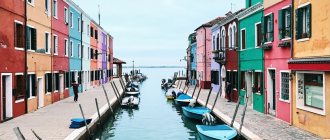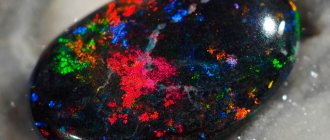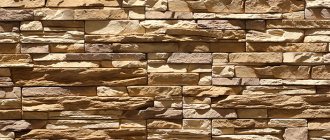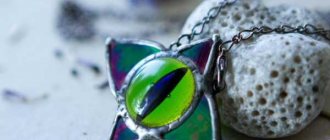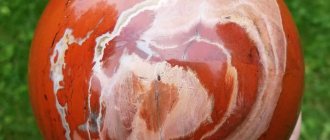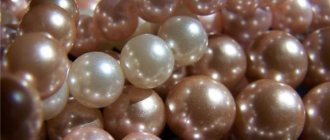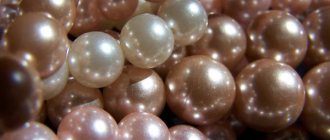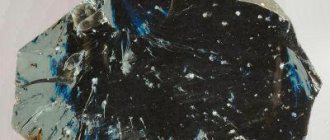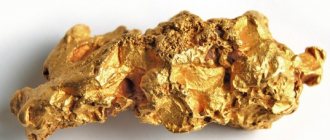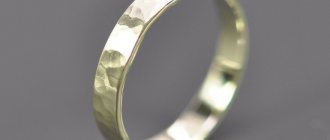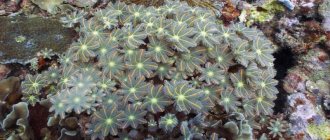Send your friends a ray of light from sunny Italy 
- 11
Shared
The island of Murano is located in the Venetian Lagoon, 1.5 km from the Fondamente Nove pier, or 10 minutes by vaporetto. Murano does not stand out architecturally from the other islands of the lagoon and generally resembles a smaller copy of Venice. Yet the island is known throughout the world for its centuries-old glassmaking traditions.
Once upon a time, glass was produced in Venice itself, but from the end of the 13th century, production was transferred to Murano for a number of reasons, so it is more correct to say not “Venetian”, but “Murano” glass. In Murano, glassblowers perfected their skills and performed their work so meticulously that Murano glass became a real brand, popular with the most senior and titled people.
Today, like many centuries in a row, Murano glass is a symbol of high quality and original ideas of Italian craftsmen who create real objects of art for refined and elegant interiors. In addition, Murano glass jewelry in one form or another is also very popular, chosen by celebrities and top models.
What is Murano glass
Murano glass is glass made according to an ancient recipe in Italy. Outwardly, Murano looks like gems. It is dense, but at the same time clean and transparent, with a smooth surface. Murano can be either plain or painted in bright colors, with or without a pattern.
Advantages of Murano:
- uniqueness (each piece is made by hand);
- high quality - very thin, but durable;
- durability;
- design.
Murano glass is of Italian origin. Venetian glass first appeared in Venice in the 8th century, but the work of local craftsmen was no different in quality from the work of the masters of Ancient Greece and Egypt.
In the 13th century, artisans from Constantinople brought a sample of unusual painted glass and the technology for its production to Venice. The craftsmen took advantage of the new technology, and suddenly their products began to sell out and bring income to Venice.
However, due to the fact that the new technology required the use of fire, and the buildings in Venice were made of wood, in order to protect the city from fires, it was decided to move the glassblowers to the island neighboring Venice - Murano (the name of the island is where the name Murano glass comes from).
To keep the glass recipe a secret, the artisans and their families were forbidden to leave the island. Strangers were not allowed onto the island; masters faced the death penalty for disclosing the recipe. Even the construction of houses and machines on the island was carried out by craftsmen and their children.
Over time, the masters and their families became honorable people, had many privileges - they were given titles, given lands, they could marry the most beautiful girls.
By the 15th–17th centuries, the development of Murano had reached its peak - it was presented as a gift to noble people. Having it in the house was considered a sign of wealth and luxury.
To view a vlog from the island of Murano:
Varieties
Real Murano glass is now produced only in Italy (Venice and the island of Murano). An association of craftsmen has been created there - Promovetro, which checks Murano for compliance with quality.
At the same time, the 2 largest production factories - Barovier & Toso, Seguso - belong to the descendants of craftsmen who worked in the 13th–14th centuries.
Varieties of Murano:
- Filigree is a thin pattern of colored threads that is located inside the product.
- Millefiori is a multi-colored pattern on the surface of a product in the form of any figure that is superimposed on the surface of the product.
- Pulegoso is a pattern of air bubbles obtained as a result of sudden immersion in water.
- Aventurine is a pattern similar to a scattering of stars (obtained by adding copper particles to molten glass).
- Craquelage is chaotic cracks on the surface.
- Crystallo is a completely transparent specimen.
- Laticinio is a beige-milky specimen.
- Sommerso is a thickened specimen.
- Mosaic - the pattern is similar to an ornament assembled from multi-colored figures.
- Colored – painted in any solid color.
- Perle are beads that have foil inside them, making them look like pearls.
- Incalmo is the rarest and most difficult to produce type of Murano; the finished product is assembled from several parts of different colors.
General information about Murano glass
The history of Murano glass production begins back in the 13th century. The name of the material was named after the island of Murano, located near Venice. It was there that master glassblowers used special techniques and honed their skills, making special objects from the finest glass.
Previously, Venice was also involved in the production of glass products, but they did not stand out from the general mass of similar things. The situation changed after the 13th century, when local merchants brought samples of Byzantine glass and a recipe for its manufacture from Constantinople. From this moment the path of creating Murano glass or, as it is also called, Venetian glass, began.
Much time has passed since then, production declined and rose, new technologies appeared, but one thing remained unchanged - the material was made by hand using a special tube with a mouthpiece.
The first glassblowers lived directly in the state itself. The development of the glass industry benefited the government of Venice, but not its inhabitants. This lasted for 5 centuries, and in 1291 the authorities decided to send all artisans and their families outside the city, namely to the island of Murano. The craftsmen could not leave the island, much less divulge the secrets of Murano glass production. Such violations were punishable by prison and even death. But glassblowers were not left out. They and their relatives enjoyed certain privileges. For example, glassmakers could marry their daughters to Venetian patricians, with all titles of nobility retained for their offspring.
By the middle of the 15th century, 25 thousand people already lived on the island. Glass production flourished and improved. The era of world domination of Venetian glass began, its various shades, shapes and product options were created, attracting the attention of connoisseurs of beauty. It was during this period that frosted white glass and its warm colors were invented. Variants with veins, feathers and sparkles also began to be produced. Murano glass with a “crystal” look with its characteristic transparency and brilliance was especially valued.
Craftsmen from the island of Murano made mirrors with ideal reflective properties. The reverse side of the product was covered with a pattern or carving. Ordinary vases and glasses were made in the shape of animals, flowers and bell towers. Murano glass chandeliers were also popular, with floral details made from the same material as decorations.
What does Murano glass look like?
The work of glassblowers in Venice was a good addition to its treasury. Glass products became the main gifts that were presented to noble nobles and heads of other states.
In the 16th and 17th centuries, Venice began to experience difficult times. Bohemian glass came into fashion and replaced the popularity of Italian glass. The occupation of the city by French troops played a significant role in the decline in production, which led to the closure of factories.
Production began to be established in the second half of the 19th century. The first factory was opened at the same time. It was possible to completely restore production only after 50 years. Products made from Murano glass remained, as before, popular among the Venetian nobility, and later again reached the world level. Currently, there are many workshops on the island, the owners of some of them are descendants of the then glassblowers who worked on Murano back in the 13th century.
Glass manufacturing technology
The main feature of Venetian glass is that it is created only by hand according to an ancient recipe, which is passed down from father to son. Moreover, each product is unique, because it is impossible to repeat the pattern exactly.
The main components of glass are sand (from the Fontainebleau forest, which has one of the purest sands in the world) and a coloring matter (non-ferrous metal - iron, cobalt, copper, tin). The product is blown using a tube, one end of which is immersed in glass molten to 1200 degrees, and the master blows into the other, blowing out a ball and giving it the desired size and shape.
Then these parts are connected to each other and covered with multi-colored enamel or gold chips. The production process of Murano is difficult and unhealthy (constant inhalation damages the lungs).
To view the work process of a master from Venice:
See another production review:
Nuances of product care
Murano glass objects are quite fragile, so they require special handling. Jewelry should be removed while doing household chores, playing sports, going to the pool or just taking a shower. For cleaning, do not use chemicals or abrasives that can damage the surface. Store glass objects in special fabric bags, separately from other decorations. They need to be protected from temperature changes, and wiped with a piece of flannel after each wear. If you take proper care of Murano glass, it will delight you for decades.
How to spot a fake
Murano is often passed off as a fake. You can distinguish the original:
- The original will always have the Vetro Artistico Murano mark, regardless of size, as well as a certificate of quality (with the exception of vintage examples that were made before 1980 - these were not marked).
- The surface is smooth, cool to the touch, there are no chips or scratches.
- Products even from the same set will always be slightly different from each other (since they are made by hand).
Watch the saved broadcast on the topic of fakes:
Barovier&Toso is the largest factory on the island
The history of the Barovier&Toso factory begins in 1295. This family production is considered one of the oldest in Italy. The brand's archive contains countless drawings and drawings with numbered product samples. Some drawings date back to the 16th-17th centuries. And note that the factory can reincarnate any of its works at the request of the customer.
Wineglass. One of the oldest sketches from the Barovier&Toso factory.
Wineglass. One of the oldest sketches from the Barovier&Toso factory.
Scope of application of Murano glass
Murano is made from:
- chandeliers;
- vases;
- decorations;
- dishes (vases, jugs, candlesticks);
- figurines.
Separately, it is worth noting jewelry - there is a jewelry chain "Pandora" on the world market, which has gained popularity thanks to its prefabricated bracelets (various beads are placed on a silver or gold base - charms, some of which are made of precious metals, and some of Venetian glass).
A similar bracelet with Murano glass charms is Pandora’s calling card. Many copies are made of it, but only Pandora guarantees the originality of its charms.
Pandora beads made of Murano glass
Murano glass vases
Murano glass plate
Murano glass pendants
Hard times
The difficult times that befell the Venetian Republic also affected the glassmakers of the island of Murano. Privileges lost their meaning, advantageous marriages did not live up to expectations, and industrial espionage still achieved its goal. Once guarded like the apple of an eye, the secrets of Murano glassmakers leaked onto the continent, creating competition and lowering prices for products.
The gradual decline in the profitability of glassmaking led to the fact that at the end of the 18th century, along with the end of the Venetian Republic, the sun set for Murano craftsmen. During the reign of Napoleon, the former greatness of famous craftsmen was only remembered. Nobody made glass.
What are the secrets of production?
Previously, technologies were kept in the strictest confidence. But today many of them have become famous.
Various chemical and natural components are added to Venetian sand, thanks to which craftsmen obtain different colors. Then the resulting mass is placed in an oven with a temperature of a thousand degrees or higher. Then the master takes it out and blows out the required figure. At the next stage, place the product in another oven until it cools completely for a day or even more.
